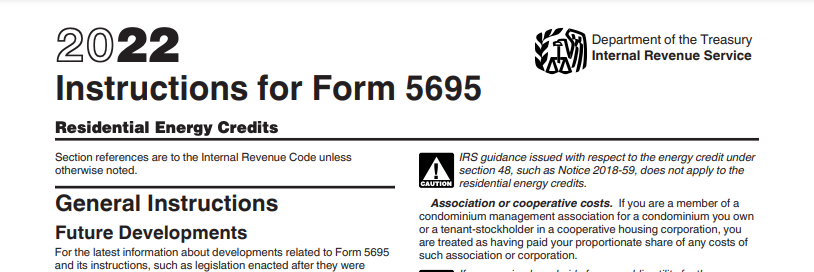25(C) Tax Credit for Energy Efficient Home Improvements: Everything You Need to Know
The 25(C) Tax Credit for Energy Efficient Home Improvements is a great opportunity for homeowners to save money while improving their home's energy efficiency. This federal tax credit was created to incentivize homeowners to make upgrades that reduce energy consumption. It can cover up to 30% of the cost of eligible home improvements, with a maximum credit of $750. But what exactly is this tax credit? Who qualifies for it and what kinds of home upgrades are covered? This article will explain everything you need to know about the 25(C) Tax Credit so you can determine if you're eligible and how to take advantage of it.

25(C) Tax Credit for Energy Efficient Home Improvements:
The 25(C) Tax Credit, also known as the Nonbusiness Energy Property Credit, is a federal tax credit that allows homeowners to deduct up to 30% of the cost of certain energy-saving home improvements from their federal taxes.
What is the 25(C) Tax Credit?
The 25(C) Tax Credit, officially referred to as the Nonbusiness Energy Property Credit, is a valuable federal tax incentive designed to encourage homeowners to make energy-efficient improvements to their properties. This credit allows homeowners to claim up to 30% of the cost of qualifying energy-saving improvements directly off their federal taxes, providing a substantial financial benefit. To take advantage of this credit, homeowners must file Form 5695 with their annual tax return. The types of improvements that qualify for this credit include, but are not limited to, the installation of energy-efficient windows, doors, roofing, insulation, and certain high-efficiency heating and cooling systems. This credit not only reduces the immediate tax burden for homeowners but also promotes long-term energy savings and environmental benefits by encouraging the adoption of greener home technologies.
Originally established under the Energy Policy Act of 2005, the 25(C) Tax Credit has undergone several changes over the years, reflecting the evolving landscape of energy policy and sustainability initiatives. The credit has been extended and modified multiple times to keep pace with new technologies and changing environmental priorities. Most recently, its validity was extended through the end of 2021 under the Consolidated Appropriations Act of 2021. This extension allowed homeowners additional time to make qualifying improvements and benefit from the tax credit. The periodic extensions and modifications of this credit highlight the ongoing commitment of the federal government to support energy efficiency in residential properties, contributing to broader goals of reducing energy consumption and minimizing environmental impact.
Why is the 25(C) Tax Credit Important?
There are a few key reasons why the 25(C) Tax Credit is an important program for homeowners:
Saves money - By reducing your tax bill, the 25(C) Credit allows you to recoup some of the costs of making energy efficiency upgrades. This can make these improvements more affordable.
Reduces energy bills - Energy efficient upgrades like insulation, air sealing, and new windows can reduce your home's heating and cooling costs significantly. The 25(C) Credit helps pay for improvements that will lower your utility bills.
Improves home value - Upgrades like new windows and ENERGY STAR products can greatly improve your home's value. The tax credit allows you to make these improvements while spending less.
Helps the environment - By lowering home energy use, efficiency upgrades enabled by the 25(C) Credit also reduce environmental impact. Less energy use means fewer carbon emissions.

https://www.irs.gov/credits-deductions/energy-efficient-home-improvement-credit
The 25(C) Tax Credit has specific requirements for eligibility:
- You must be the owner of the home where the improvements are made. This includes single family homes, townhomes, condos and manufactured homes. Renters do not qualify.
- The home must be your primary residence. Second homes and rental properties do not qualify.
- Only improvements made to the building envelope or interior systems of an existing home qualify. The credit cannot be claimed for new construction or additions.
- The home must have been built before 2018. Improvements to newer homes are not eligible.
- The home must be located in the U.S. Improvements to homes outside the country cannot be claimed.
- You must file U.S. federal tax returns and have a federal tax liability to use the credit.
As long as you meet these requirements, you can claim the 25(C) Credit for qualified improvements.
What Home Improvements Qualify for the 25(C) Credit?
The 25(C) Tax Credit covers a wide range of energy efficiency home improvements. Here are some of the most common upgrades that qualify:
Insulation - Additional insulation in walls, floors, roofs, basements and crawl spaces. Includes blown-in, spray foam and other types.
Windows and doors - Replacing old windows and doors with ENERGY STAR models. This includes windows, skylights, patio doors.
HVAC systems - Upgrading heating, ventilation and air conditioning systems to ENERGY STAR models.
Water heaters - Replacing old water heaters with new ENERGY STAR models.
Roofs - ENERGY STAR certified metal and asphalt roofs.
Biomass stoves - New high-efficiency wood stoves and pellet stoves.
Air sealing - Sealing air leaks throughout the home with caulk, weatherstripping, and other materials.
Insulation materials - Purchases of insulation, air sealing and duct sealing materials.
Electric vehicle chargers - Charging equipment for electric vehicles.
All products must be ENERGY STAR certified or meet minimum efficiency requirements to qualify for the 25(C) Credit.
How Much Can You Save with the 25(C) Tax Credit?
The 25(C) Tax Credit offers a maximum lifetime credit of $500 for things like windows, doors, insulation, and roofs. For more advanced products like biomass stoves or HVAC systems, the maximum is $300. In total, you can claim up to $500 in combined credit each year.
Assuming you spend $5,000 replacing all the windows in your home, you could claim 30% of that cost (up to the $500 limit) to save $150 on your taxes. If you also replace your HVAC system for $4,000, you could claim another 30% ($300 max) to save an additional $90.
The total tax savings for these sample upgrades would be $240. So the 25(C) Credit would reduce the out-of-pocket cost by almost $1,000!
Conclusion
The federal 25(C) Tax Credit for Energy Efficient Home Improvements is a great opportunity for homeowners to improve their home's efficiency while reducing costs. If you meet the eligibility criteria, you can claim the credit for a variety of upgrades like insulation, HVAC systems, windows, doors, roofs and more.
The credit covers 30% of the cost of improvements, up to preset limits. Overall, the 25(C) Tax Credit can enable you to make substantial upgrades to your home that improve comfort, reduce energy use, and potentially increase resale value. Just be sure to review the requirements and file Form 5695 with your tax return to claim the credit.



